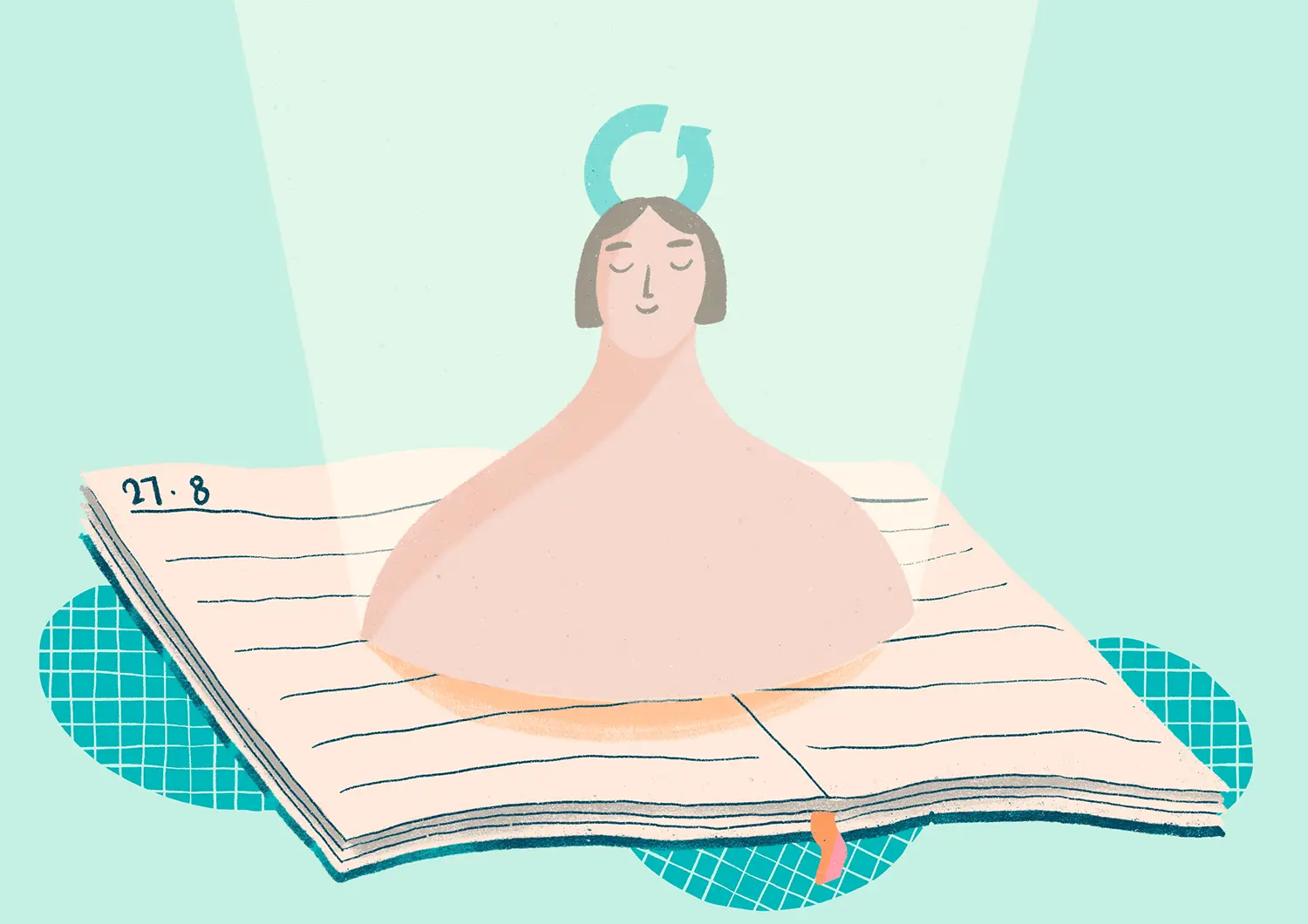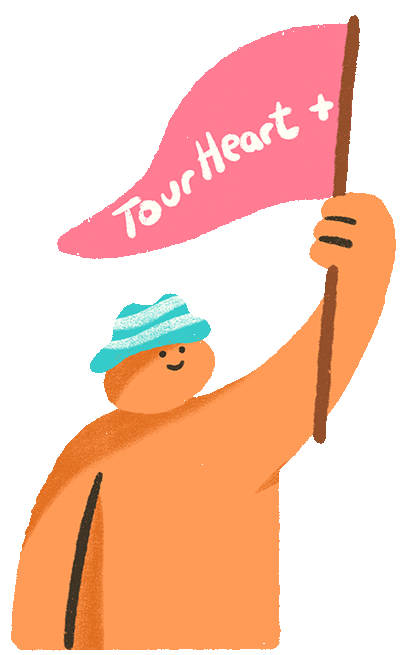
For the past ten years, Momo has been grappling with insomnia, which first struck during her freshman year of college and has persisted intermittently ever since. To describe her relationship with this condition, she quoted a line from the cantopop song "A Certain Old Friend":
"I see myself often spending time with memories of you
No longer seeing cohabiting with them as a taboo."
To Momo, insomnia has become a familiar presence, like an old friend who occasionally revisits.
"When I was in college, I was allowed to sleep in the dorm during breaks between classes or on weekends, so I did not take this matter seriously at that time. After graduating, I entered the workforce where the prevailing company culture didn't accommodate people dealing with sleeplessness. My supervisors often attributed it to poor lifestyle choices or anxiety, so I felt compelled to tough it out despite my poor mental state. I struggled to muster sufficient energy to work and had to exert a lot of effort to stay alert and respond accurately."
Trapped in a Cycle of Worry: The Fog of Repetitive Thoughts
Momo experiences insomnia as a never-ending stream of worries flooding her mind. She finds herself constantly ruminating over various concerns, ranging from relationships and family to work and the future. Amidst this chaos, she latches onto a particular worry and becomes trapped in it, unable to escape its grip. As anxiety spreads through her body, her thoughts swirl incessantly, repeatedly replaying the hardships of life. This vicious cycle of sleeplessness spirals endlessly, leaving Momo feeling trapped and exhausted.
Over time, Momo has experimented with various methods to combat her insomnia, including yoga, jogging, stretching, taking Chinese medicine, and melatonin. However, her condition persisted in a cycle of recurrence, with insomnia, her long-time companion, continuing to rear its head. She stumbled upon the idea of keeping a "mood diary", after someone introduced her to the concept. It involves recording one's emotions, related thoughts, and the events that trigger them. By identifying one’s own thinking patterns and emotional triggers, one can better be aware of and understand his/ her /their emotions and recognize any thinking patterns and possible cognitive traps. Through this practice, one can develop more positive thinking habits and break free from the cycle of insomnia.
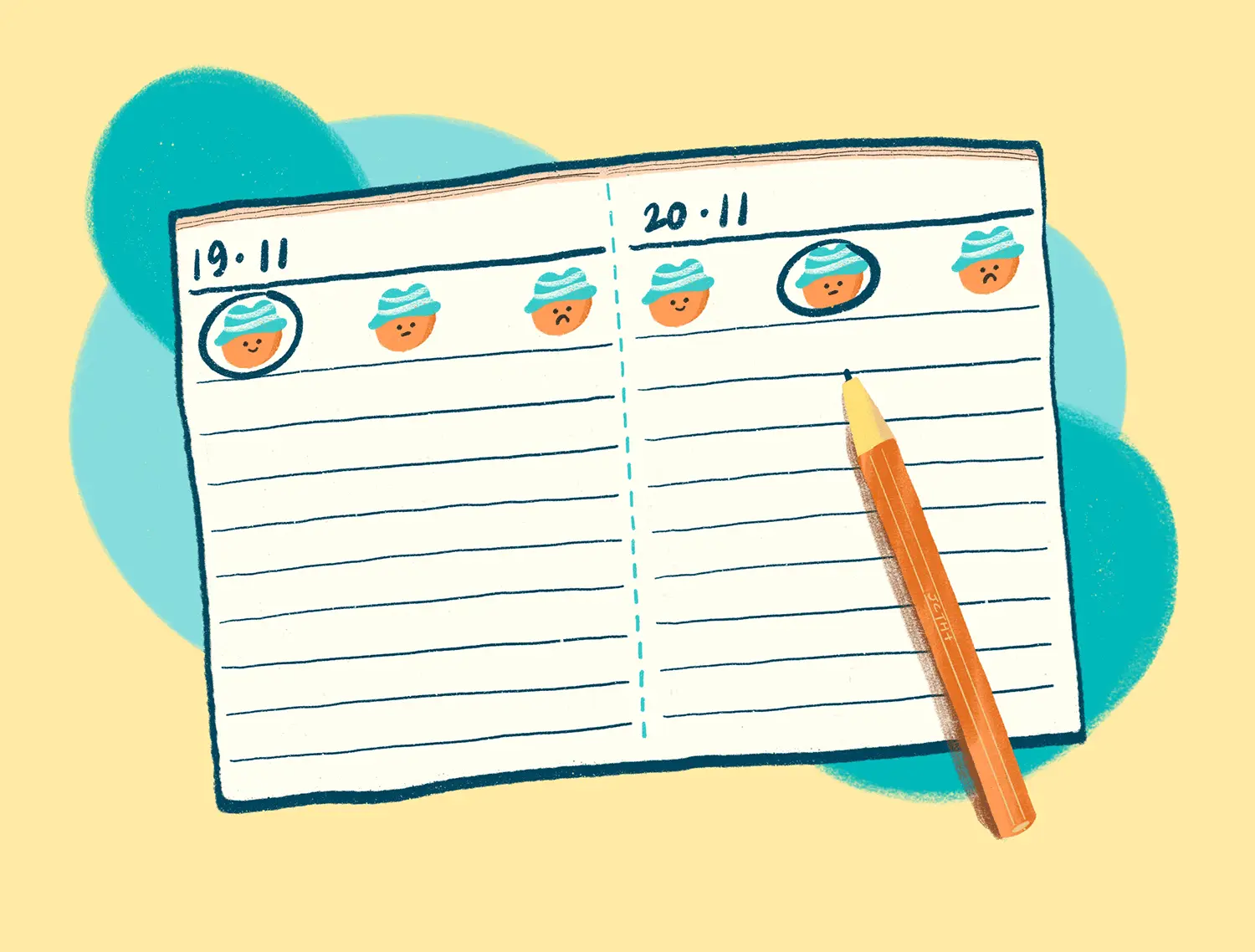
Taking Control of Emotions: How Mood Diary Helps Categorize Worries
By keeping a mood diary, Momo documents the events that ignite her intense emotions. Despite having migrated and starting a new job a few months ago, Momo feels like a lifeless automaton each day. The factory where she works has CCTV cameras monitoring every move, and her interactions with colleagues are limited to work-related matters. This lack of social interaction and emotional connection drains her energy and lowers her self-worth, leaving her worried about her emotional well-being. She has considered quitting her job, but the thought of struggling financially and being unable to afford her living expenses holds her back. Meanwhile, memories of her past life in Hong Kong, especially the good moments, haunt her at night, leaving her feeling lonely and restless. These scattered fragments of memories tug at her heartstrings, reminding her of what she's left behind.
As Momo wrote in her mood diary, she carefully recorded the events and moments that triggered her recurrent worries. For example,
- One of her main concerns was the lack of social opportunities at work and the potential difficulty in expanding her network abroad, which could hinder her job prospects in the future.
- These worries often surfaced during dinner and before sleep, when she experienced bouts of insomnia.
Upon reviewing her diary, Momo discovered that her mind tended to race the most before sleep, feeling confined in a hazy chamber filled with unsettled air.
"Once I identify my emotions, I acknowledge my reaction and seek ways to respond with kinder thoughts, trying not to let negativity sweep me away," said Momo. She also made a conscious effort to differentiate between hypothetical worries and practical worries. "When I started to make a conscious effort to distinguish between the two, I realized that most of the worries in my head were hypothetical," she added. This awareness helped her to manage her emotions more effectively.

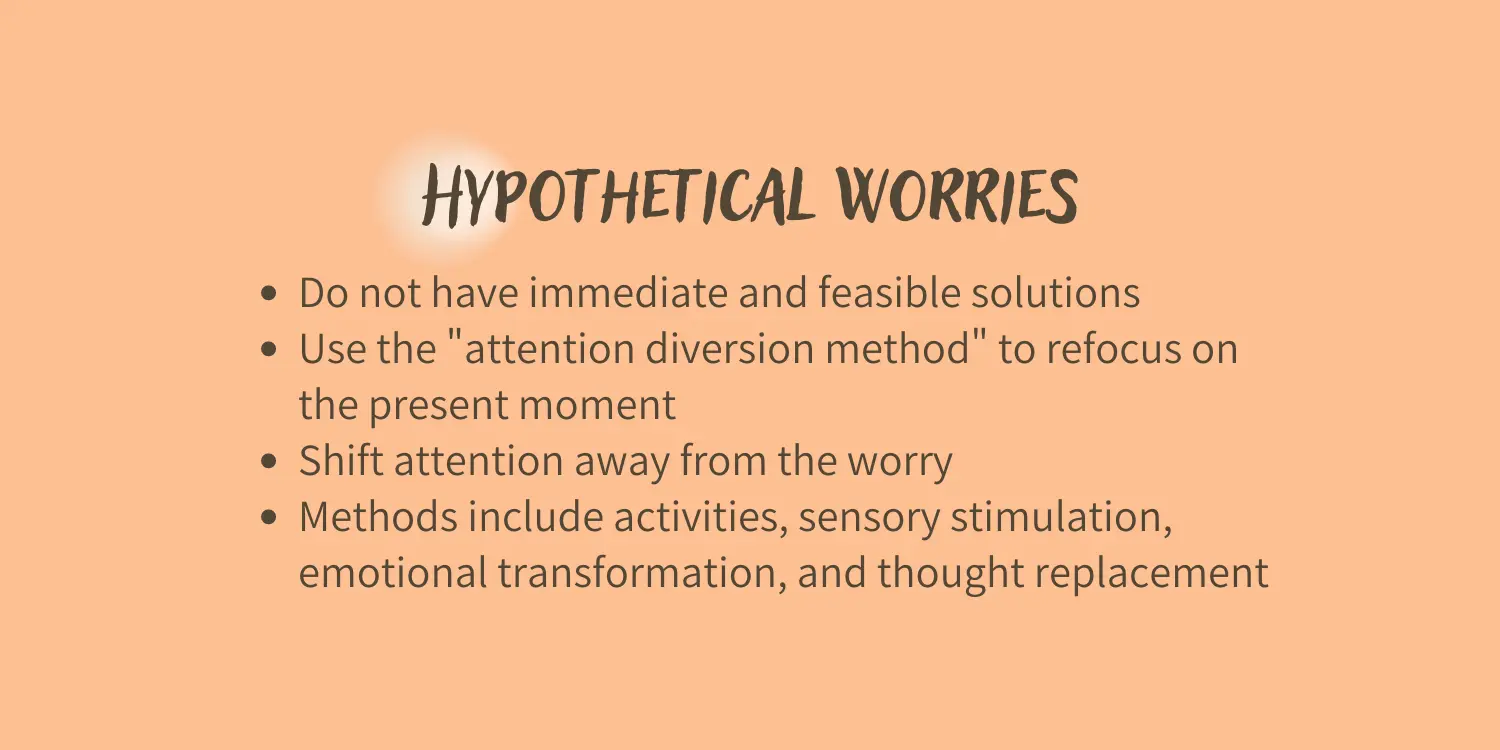
The Art of Scheduling Worry Time
Momo would honestly express her feelings and thoughts, then examine and analyze what caused those emotions. “I feel like I can't switch jobs or make new friends, but these are just my thoughts, not real experiences. I'm letting fear control my thoughts and engage in emotional reasoning, which creates a more negative filter," she realized. Keeping a mood diary helped Momo understand her own habitual reactions. "By specifying the source of my emotions, I gain a better understanding of my core values and inner needs... It may not result in a quick fix, but at least I know."
After recognizing when and what caused her worries, Momo intentionally scheduled time to worry during her commute instead of before bedtime. “Although it may not be the best time, it's better than ruminating over my thoughts before sleep. As I leave the train, I tell myself to STOP and prepare to focus on work. Before bed, I record my anxieties in my mobile phone notebook and think about them the next morning. I often remind myself, 'You are safe. No one can hurt you,' which has a powerful soothing effect on my mind.”
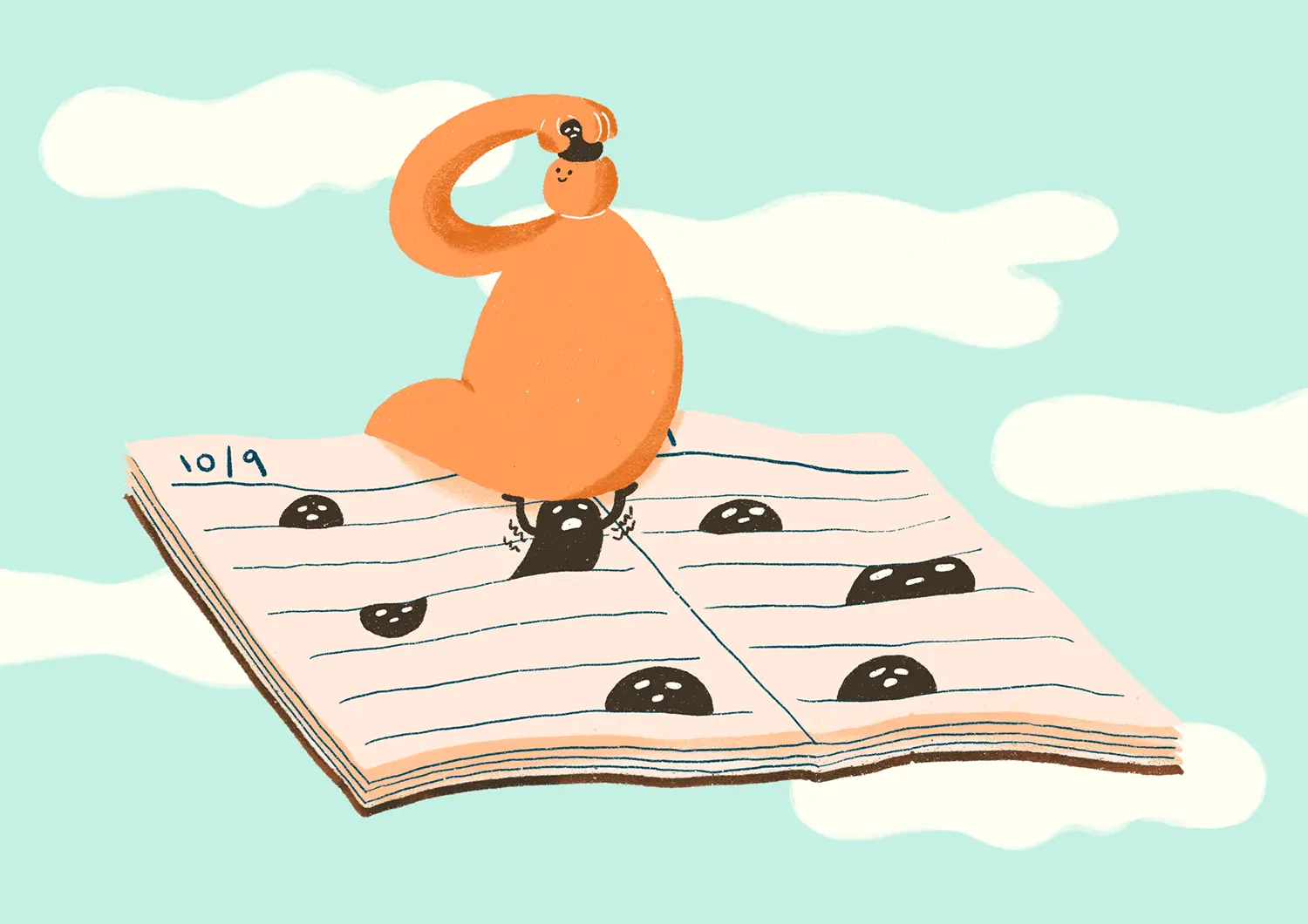
In reflecting on her use of the mood diary, Momo shared, “Initially, I didn't quite grasp why writing in such detail was necessary, but later on, I came to terms with the fact that my memory is fleeting, much like that of a goldfish. Even a day later, I might not be able to recall what caused my emotions to stir. After a few days, I may not even recollect what I was contemplating just last week, only a vague notion of joy or sorrow. Writing in my mood diary helps me step back and become an outsider looking at myself, witnessing my small progress and struggles, and increasing my confidence. It's only through consistent documentation of my emotions that I can pinpoint the low points and effectively regulate them.”
Momo also noted, "Everything is interconnected - sleep, emotions, thoughts. If we fall into a trap, it's easy to form a vicious cycle. Conversely, if we take good care of our emotions, they won't swing up and down as easily." Insomnia reflects Momo's unresolved internal emotions and thoughts, past traumas, current chaos, and future hopes, all condensed into this state of sleeplessness. By allowing herself to sort out her thoughts, observe her current thoughts and feelings, and limit excessive thinking, Momo found a way to break the vicious cycle.
If you're looking to break the cycle of rumination and overthinking, or want to learn more about techniques like “worry diary”, “shifting attention”, and “worry time”, TourHeart+ offers free membership with access to content on these topics and more. Join us today and start taking steps toward a calmer, more peaceful mind.
